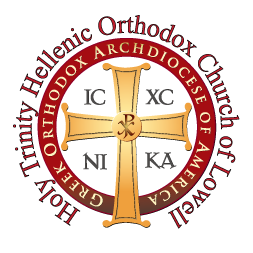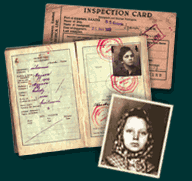

Parish History
We are the most historic Eastern Orthodox Greek Church located in Lowell, Massachusetts and welcome visitors of all faiths and backgrounds to insure our culture and traditions are intact for our future generations. We are in the process of updating our History. Please read the book below while we do this. Our church is pictured just after the halfway point of this book and dated back near 1910.
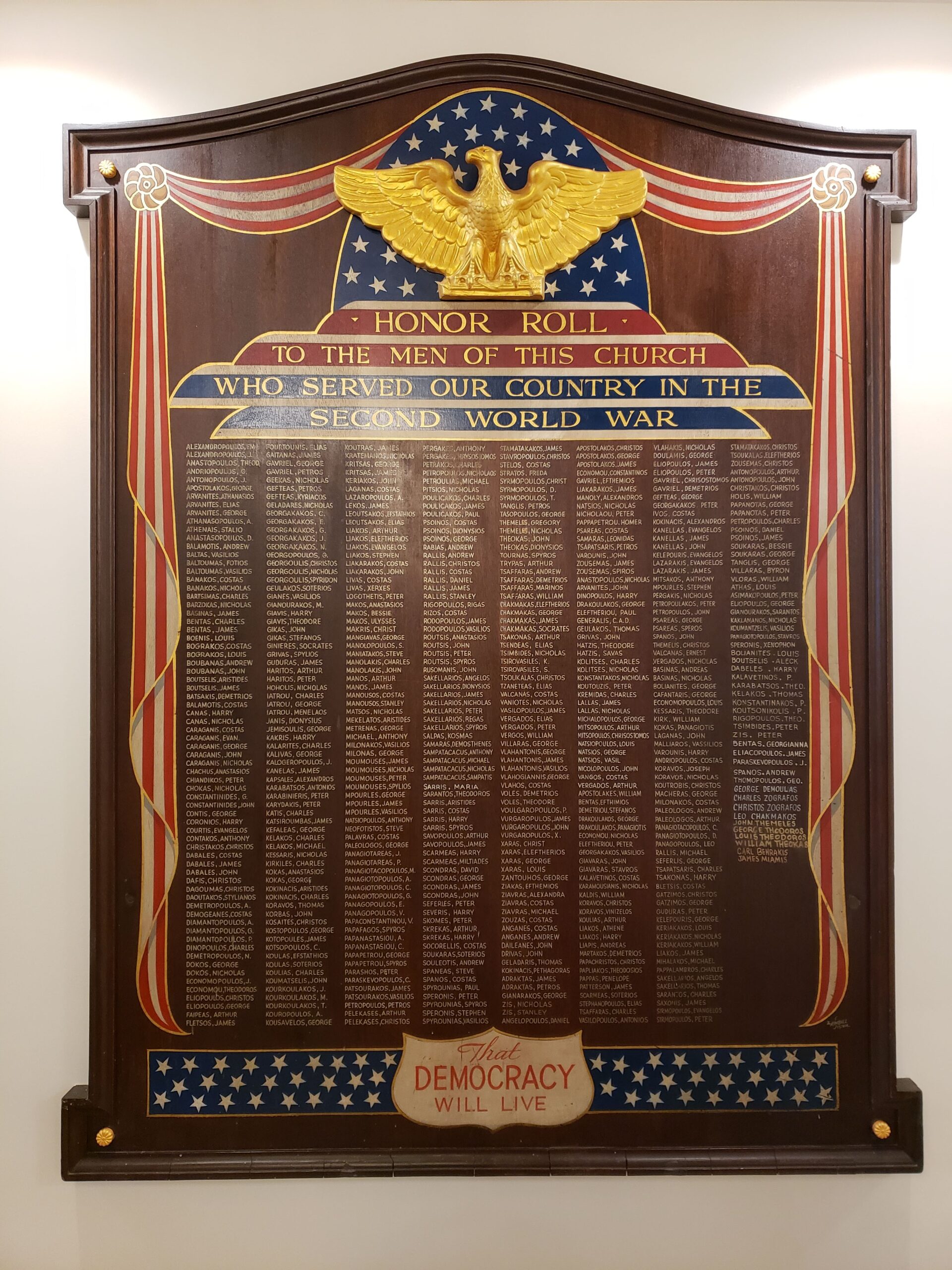
Abstract of the Certificates of Corporations Organized Under the General Laws of Massachusetts stated that in 1899 that Lowell had 2 Certificates of Organization:
1.) Greek Orthodox Community April 2 1899
2.) Greek Orthodox Community of the Annunciation, Lowell June 16, 1899
Websites Recommended by HHGA
These sites have been selected by HHGA based upon several criteria: ease of use, accessibility, reliability ofinformation, and ability to assist Hellenic genealogical research in a meaningful way. This list is not intended to be comprehensive. A number of noted sites have been omitted because they do not appear to meet these criteria. Inactive sites, websites duplicating any of the information readily obtained from these five selected sites, and sites dedicated largely to the
posting of queries have not been included among this list. By using this list of websites, HHGA feels that visitors may be able to conduct a search of the internet in one sitting and either locate key genealogical data or learn about its exact location and the means to obtain it.
www.ellisislandrecords.org
This site contains the massive online database of the Ellis Island Foundation for the Ellis Island passenger ship records and manifests. Visitors can search the database for immigrant ancestors, view a digital copy of the actual handwritten manifest, and order copies of the manifests and photos of the passenger ships that carried relatives. Easily the most important site for ethnic genealogy in the U.S. See our article for information on how to use the online search engine to get the most information from a visit to this website.
Formerly one of the top websites for genealogical research in the U.S. It is no longer maintained by a non-profit group, but by for-profit giant Ancestry.com. Nevertheless, the site still permits visitors to search a number of important, free, online U.S. databases such as the Social Security Death Index and others for information about ancestors and relatives.
This site is one of the most important general genealogy sites in the U.S., although many of its databases are available only through the purchase of a pricey online subscription. This site has large numbers of massive databases covering vital statistics, federal censuses, draft registration cards, city directories, historical newspapers, and more, with the amount of available data growing each month. Among the best features of this site are the free downloadable forms for research and recording information extracted from online digital images of federal census and other important records. When used together with the Rootsweb site, these two can cast a rather wide net for beginning genealogical research.
This website for the Preservation of American Hellenic Heritage continues to grow regularly through the addition of information and resources for persons interested in the history of Greeks in the U.S. Information about archival collections and their location throughout the country is helpful for locating early history about specific Greek communities. The site also publishes memoirs and book reviews, both of which may be helpful in learning more about the historical milieu of immigrant ancestors.
licacatsakis online (outdated and doesn’t work any longer)
Dr. Catsakis-Bywater has developed this site as an outgrowth of her experience in Hellenic genealogical research. Her site provides a concise overview of the information available in Greece. Maps and other finding aids assist visitors; Dr. Catsakis-Bywater has also authored a number of helpful texts and gazetteers for Greek genealogical research. Note that there are no databases on this site, nor is there any assistance for beginning a Greek genealogical search in th U.S., a step recommended by Hellenic Historical and Genealogical Association.
Genealogy.com is one of the best sites for general tutorials and methodological information. Even though there is little, if any, specific information for Hellenic research, this site will assist viewers in understanding how much information may be available in the U.S. to enhance a family history and how to go about obtaining it.
The Boston Area’s First Greek Parishes
The first Greek Orthodox church in America was that of the Holy Trinity in New Orleans, La., in 1868. The second was New York City’s Holy Trinity in 1891 and the third Chicago’s Holy Trinity that was founded in 1892. The Boston-area churches followed.
Lowell
The fourth Greek Orthodox parish in America, and first in the Boston area, was Lowell’s Holy Trinity, which was started in 1893 and was serviced by Fr. Kallinikos Dilbey (or Delveis). The church building was dedicated in 1908.
The community started to take shape in 1893-95, when Michael Iatron (or Iatros) founded the Washington-Acropolis Society. He became the parish’s first president and was succeeded by George Gouzoulis in 1908.
Lowell residents born in Greece appear in U.S. Census lists as early as 1850 (i.e. Mary Partridge, 24), but the first Greek of Lowell was probably John Kasimatis who was born in Hania, Crete, then under Turkish occupation. In his passport application he said he had lived in Lowell since 1874 and became a naturalized U.S. citizen in 1881. He was the husband of Helenand the father of George.
The Lowell Hellenic Heritage Association said that about 50 Greeks, mostly peddlers, lived in Lowell in 1891, and about 200 by 1895. Greeks were the third most populous immigrant group in Lowell after the Irish and the French Canadians.
In 1913 Thomas Burgess in his book “Greeks in America” said Greeks started arriving in Lowell in 1892 to work in the mills. He said they spoke no English, stuck together, lived in terrible housing conditions but were hard workers. Employers liked them because they did not drink and did not like to strike. These characteristics made them unpopular with other immigrant workers, so the Greeks had to walk to their homes (mostly on Market Street) in teams!
Lowell’s importance in the life of Greek migration to America is evidenced by the 1906 founding of the first Greek parochial day school in the country (the Hellenic American School) and the 1913 opening of a Greek consulate in the city.
Church life was disrupted between 1934 and 1944 by an old-calendarist priest (Christoforos Contogeorge) who defied Ecumenical Patriarch Photius and the Greek Orthodox Archbishop Athenagoras by establishing in Lowell the Archdiocese of America and Canada, Inc. After several years of litigation, a settlement was reached, the movement was ended and in 1961 the last church belonging it, Lowell’s St. George parish, joined the Greek Orthodox Archdiocese.
Peabody/Salem
In his 1936 book “Η Ιστορία τής Ορθοδόξου Ελληνικής Κοινότητος Peabody-Salem, Massachusetts” (“History of the Greek Orthodox Parish of Peabody-Salem, Massachusetts”), parish priest George Economides said, the Peabody area started seeing Greeks in 1897 with the arrival of brothers Dionysios and Georgios Adrianos from the Georgitsi village outside Sparta. The brothers lived in Lowell but worked in Peabody’s tannery of Alexander B. Clark. According to Economides, by 1900 there were about 50 Greeks in the area, most from Georgitsi, including brothers Christos and Athansasios Sigalas, Pantelis and Ioannis Tsaggaris, Aristeidis Bratsinis, Panagiotis Tserotas, Georgios and Dimitris Katsiris, Dionysios Borilas, Pausanias Alexandropoulos, Andreas Chrysomalis and Georgios Papathanasopoulos. By 1906 there were about 300 Greeks in the Peabody area and it was then that St. Vasilios Greek Orthodox Church was started. Its first priest was George Sakellariou and the first parish council president was Chris Kollinatis.
The first Greeks in Salem in 1898 were: Georgios Kehagias, Konstantinos Christakos, Anastasios Moshidis, Nikolaos Papadogiannis, Elias and Charalambos Gouzoulis, Konstantinos Stamatianos and Konstantinos Papamichail.
Boston
The next parish was that of the Boston Cathedral of the Annunciation, which was started in 1899. The church itself was completed in 1903 and is listed in the U.S. National Register of Historic Places.
According to the cathedral’s website, Boston’s Greek Americans celebrated their first liturgy in 1890 with the help of a Syrian Orthodox priest, who spoke Greek, and performed services in a rented hall on Kneeland and Washington Streets in downtown Boston. Approximately 100 Greeks lived in the area at the time, and community members assisted one another by offering lessons in Greek and English and financial assistance to those of their compatriots in need.
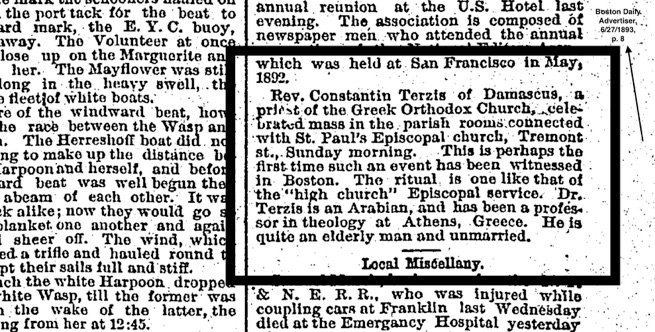
Another version of the first Boston liturgy was reported by Orthodoxhistory.org that referred to a June 27, 1893, article in the Boston Daily Advertiser (left), which said that a Fr. Constantin Terzis from Damascus performed the liturgy in a room at St. Paul’s Episcopal Cathedral, 138 Tremont St., on Sunday, June 25, 1893. Fr. Terzis had arrived in New York in 1892 (see below).
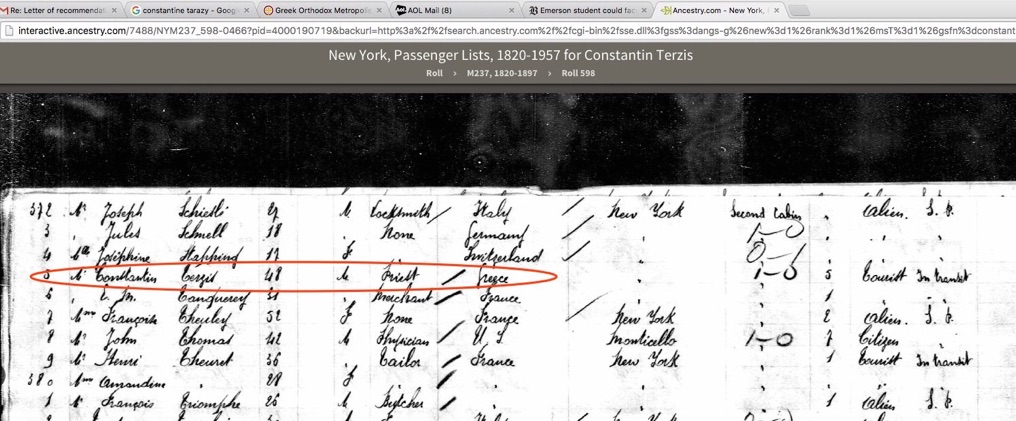
In 1899 Fr. K. Papageorgio
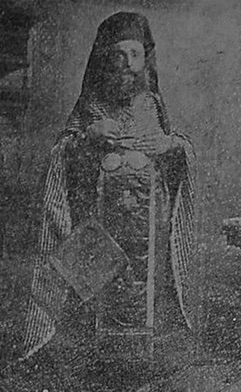
u performed services in the same hall, and he was followed by Fr. K. Papakonstantinou. He was succeeded by Fr. Panagiotis (Peter) Phiambolis (b. 1840, Ithaca, GR, d.1927, St. Louis, MO), who had served in Chicago’s Holy Trinity a few years earlier. Fr. Phiambolis, who apparently was the first priest sent by the Church of Greece to serve Greek-Americans, held services in a rented hall on Stuart and Tyler Streets in 1901. On the left, is Fr. Phiambolis in a photograph in the St. Louis Daily Globe- Democrat, on June 23, 1907, when he was serving in St. Louis.
Records show Fr. Phiambolis had emigrated to the U.S. in 1892 with his wife and four children, the two oldest of whom had been born in Romania/Russia

.
Heading the Boston Cathedral organizational effort, which started in 1899, were M. Anagnos (see earlier section in the site), J. Parmenides, A. Gounaris, S. Stamatelos, A. Stavropoulos, C. Zevitas, P. Govostis, G. Grimoutes, G. Anastasopoulos, E. A. Sophocles (see earlier section in the site), J. M Rodocanachi (see earlier section in the site) and A. Synadinos, among others.

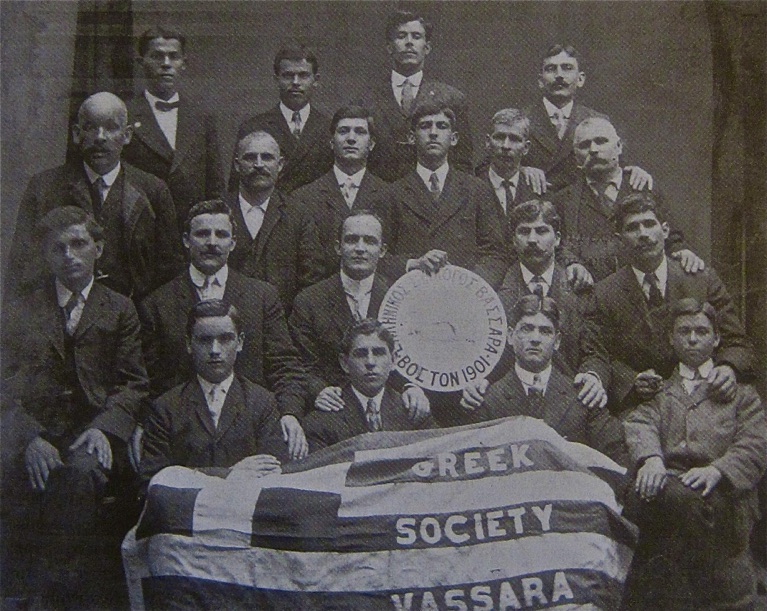
Some of the founding members of the Vassara Society in 1901. (Photo courtesy Vassara Society)

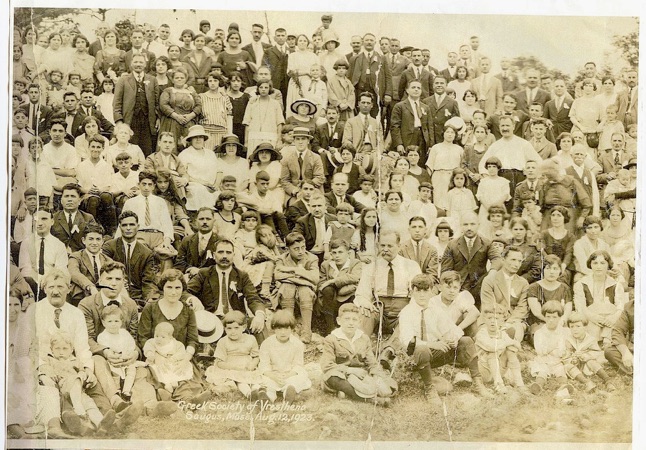
Picnic of the members of the Vresthena Society in Saugus 1923. (Photo courtesy Vresthena Society)
A rare early 1900s photo of the first presidents of the Pentalofos Adelfotis. From left: Thomas Proutsalis, young Christos Coios, Christos Coios, Speros Gatzoulis, Michael Babalis, Cosmas Saitas, Arthur Gatzoulis, Charles Aliapoulios and Alexandros Gatzoulis.
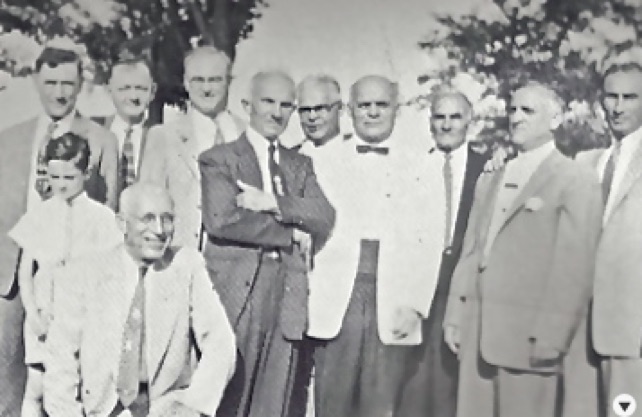


Copyright online article by the following site: http://www.mparaschos.com/Boston_Greeks/Church,_Civic_Groups.html
Faith
Information
Facebook: https://www.facebook.com/holytrinity.lowell
Instagram: https://www.instagram.com/holytrinitylowell/
Twitter: https://twitter.com/HolyLowell
Youtube page for all Church Services: https://www.youtube.com/channel/UC1ukMQyQlULGbNIXSEGfVKA/videos?view=57&pbjreload=102
